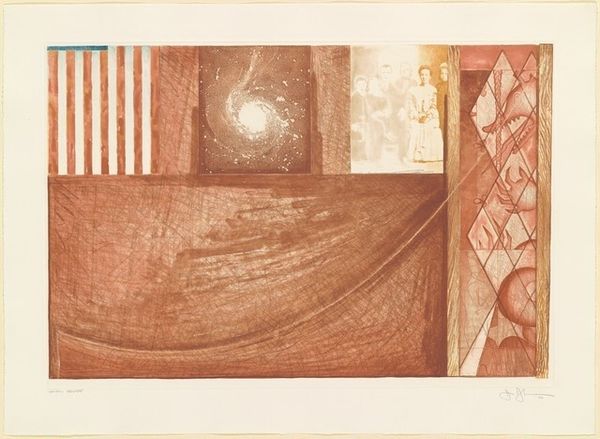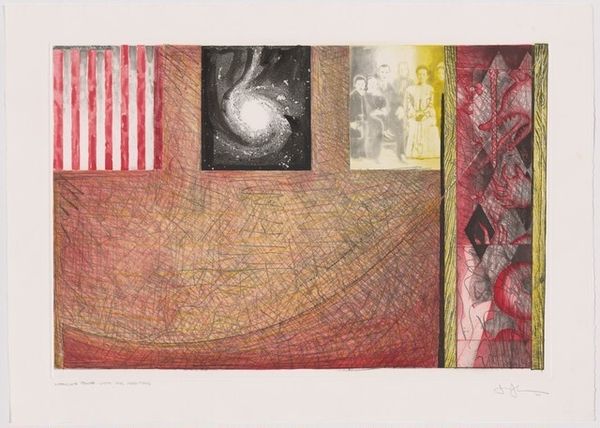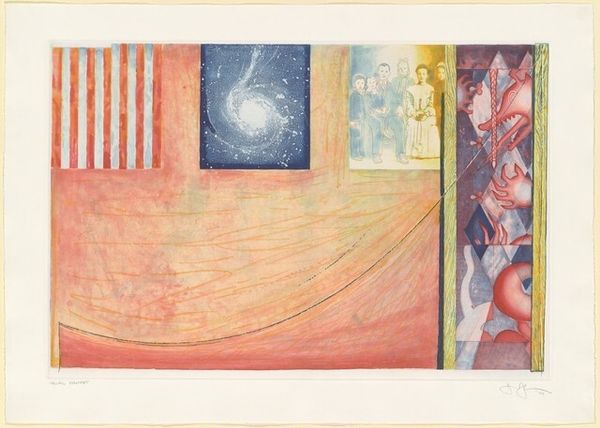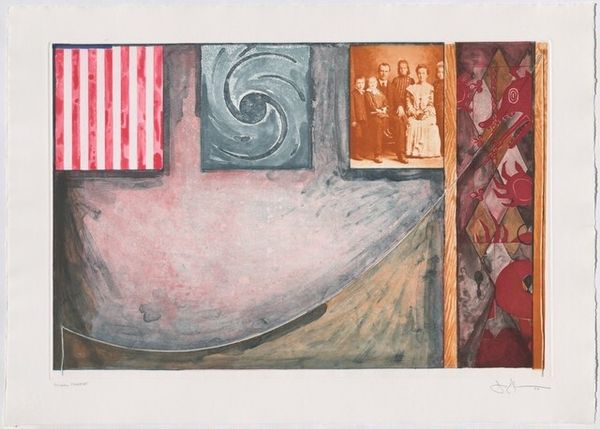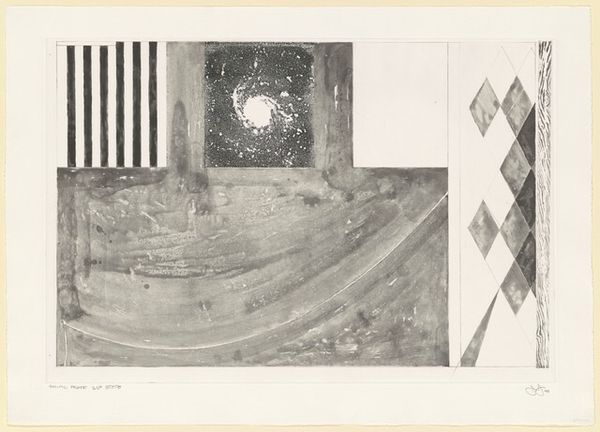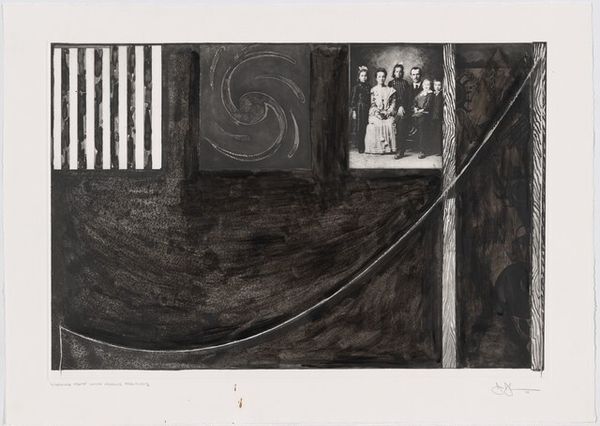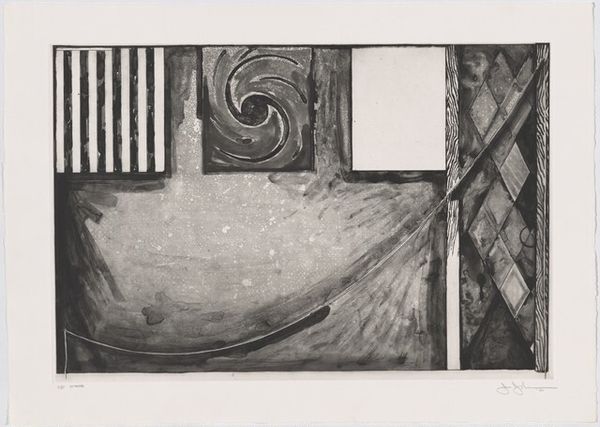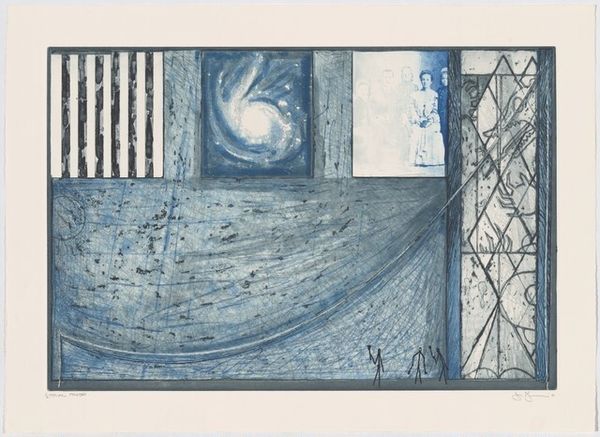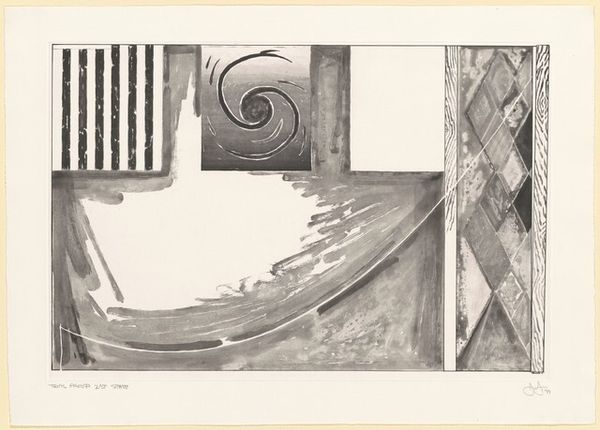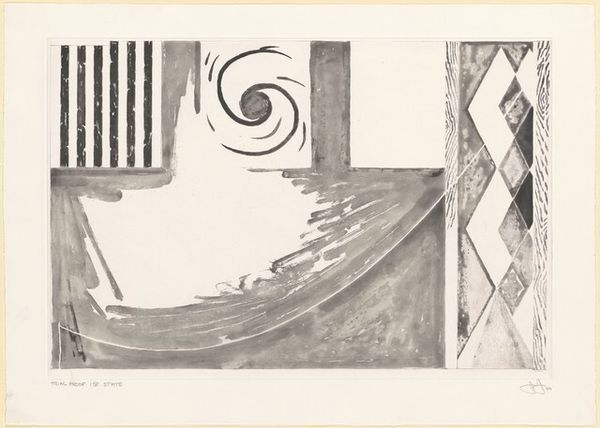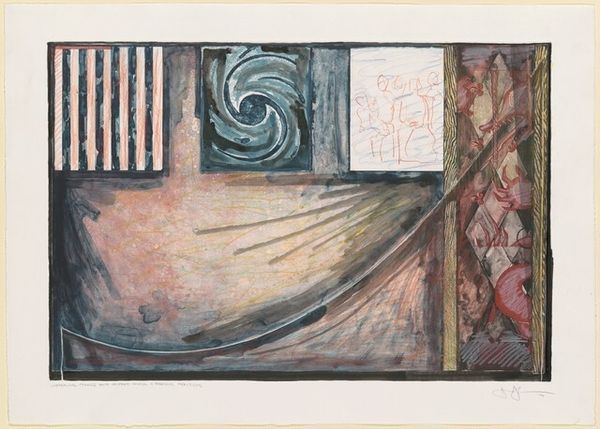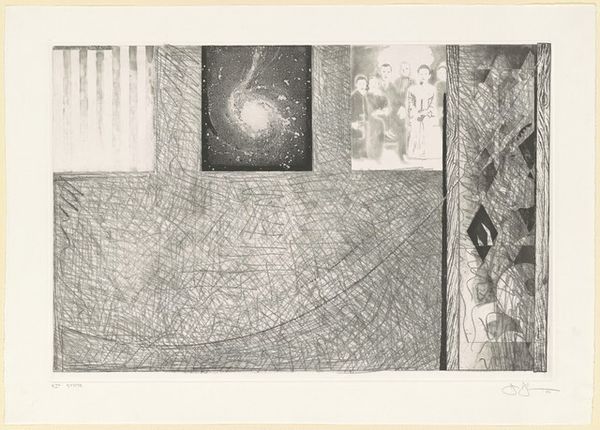
#
neo-dada
Dimensions: plate: 45.72 x 67.31 cm (18 x 26 1/2 in.) sheet: 56.83 x 78.11 cm (22 3/8 x 30 3/4 in.)
Copyright: National Gallery of Art: CC0 1.0
Editor: So here we have an "Untitled" mixed-media collage and print from 2001 by Jasper Johns. Looking at it, I’m struck by how the imagery seems to be fading into a textured surface of oil paint. What's your take on this? Curator: The first thing I notice is the sheer variety of processes at play. The visible layering of collage, printmaking, and paint invites us to consider the act of *making* itself. We are seeing not just an image, but the very labor, and potentially the mass production it’s engaging with, involved in its creation. Editor: That makes sense. It almost feels like Johns is showing us his working process. Could that choice also represent some deeper engagement with consumerism or labor, maybe? Curator: Exactly! The reproduction of images through printmaking, their combination with paint, and the very *idea* of "collage" speaks to a world saturated with readily available imagery and materials. Notice how familiar symbols like the stripes appear juxtaposed with family photographs. Where are the images sourced, and how are they repurposed? How are high and low art colliding here? Editor: So the social context – our media-saturated world – really impacts how we understand Johns's choice of materials and methods. How does the material presence of the artwork change with the cultural meanings? Curator: Absolutely. The physical texture, the layered surfaces, invite us to consider the act of consumption, appropriation, and the cultural value of these materials, whether found objects or artist's materials. Each mark carries potential, signifying not just the artist’s hand but also broader systems of value production and distribution. Editor: It’s like Johns isn’t just creating an image; he’s laying bare the production process. Curator: Precisely! Johns asks the viewer to consider labor, materials, and social contexts within art-making and broader cultural practices, thus challenging our understanding of production and reception. Editor: This really changes my perspective. I hadn't thought about the layers speaking to different modes of production and how we engage with materials. Thanks!
Comments
No comments
Be the first to comment and join the conversation on the ultimate creative platform.
